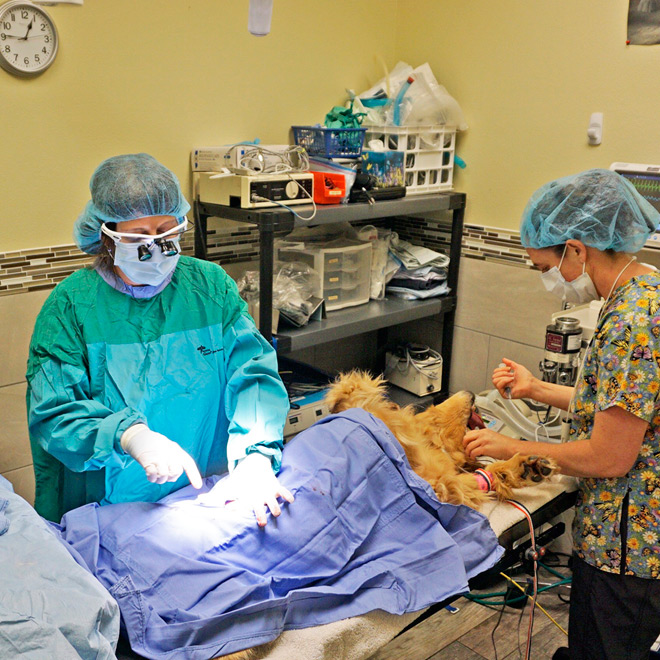High-risk Pregnancy Management
We wish that all breedings and pregnancies could go perfectly. Unfortunately, nature doesn’t always cooperate and we have to work with patients whose pregnancy requires more medical attention than normal.

At Highland Pet Hospital, we have decades of experience in dealing with a wide variety of types of high-risk pregnancies. Dr. Carla Barstow is a Board Certified Theriogenologist, and understands the risks of pregnancy for each dam she provides care for.
Issues that can lead to high-risk pregnancy:
• Advanced age of the dam
• Previous pregnancy loss
• Infection
• Breed-specific complications
• Singleton Litters
• Gestational Diabetes
• Hypoluteoidism
Dystocia
Dystocia is a general term used when the laboring dam is not progressing through the labor process as expected. This could be caused by a number of issues, including, but not limited to:
• The shape and size of the pelvic canal. Many breeds have narrow pelvic canals which makes whelping difficult. If the breed has a large head relative to the size of the pelvis, Dystocia may develop.
• Uterine Inertia can also lead to dystocia. Uterine inertia occurs when the uterus is no longer able to contract and push the puppies out through the birth canal. It can happen at any time during labor, and could be caused by uterine exhaustion.
• Puppy Size can cause dystocia. If a puppy is larger than the birth canal, there will likely be complications during whelping. This is a common problem with Singleton puppies (where there is only one puppy in the litter).
• Positioning of the puppies may cause dystocia. Pups normally are head first, or rear legs first. If they’re not in this position, it can cause problems.
Our team will work with you and your dam every step of the way to minimize or eliminate the risks of the pregnancy and ensure a healthy mother- and litter.


 Tap to Call Now
Tap to Call Now